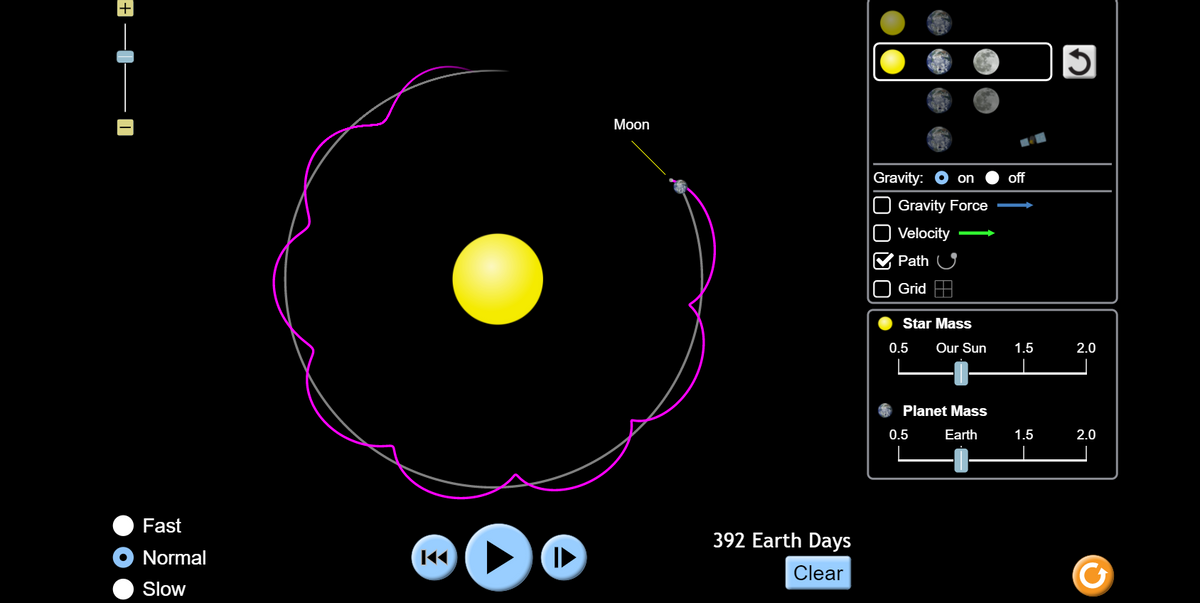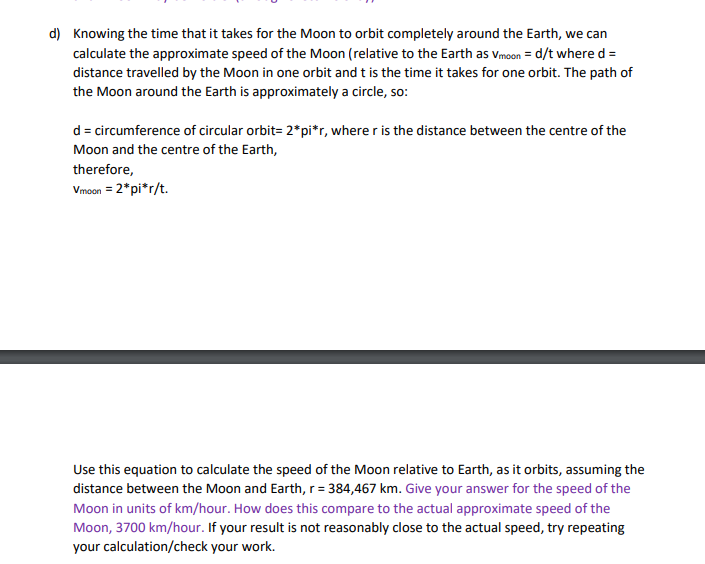Use this equation to calculate the speed of the Moon relative to Earth, as it orbits, assuming the distance between the Moon and Earth, r = 384,467 km. Give your answer for the speed of the Moon in units of km/hour. How does this compare to the actual approximate speed of the Moon, 3700 km/hour. If your result is not reasonably close to the actual speed, try repeating your calculation/check your work.
Use this equation to calculate the speed of the Moon relative to Earth, as it orbits, assuming the distance between the Moon and Earth, r = 384,467 km. Give your answer for the speed of the Moon in units of km/hour. How does this compare to the actual approximate speed of the Moon, 3700 km/hour. If your result is not reasonably close to the actual speed, try repeating your calculation/check your work.
College Physics
1st Edition
ISBN:9781938168000
Author:Paul Peter Urone, Roger Hinrichs
Publisher:Paul Peter Urone, Roger Hinrichs
Chapter34: Frontiers Of Physics
Section: Chapter Questions
Problem 15CQ: What are gravitational waves, and have they yet been observed either directly or indirectly?
Related questions
Question

Transcribed Image Text:Мon
Gravity:
on
off
O Gravity Force
Velocity
>
Path U
Grid
Star Mass
0.5
Our Sun
1.5
2.0
Planet Mass
0.5
Earth
1.5
2.0
Fast
392 Earth Days
Normal
Clear
Slow

Transcribed Image Text:d) Knowing the time that it takes for the Moon to orbit completely around the Earth, we can
calculate the approximate speed of the Moon (relative to the Earth as vmoon = d/t where d =
distance travelled by the Moon in one orbit and t is the time it takes for one orbit. The path of
the Moon around the Earth is approximately a circle, so:
d = circumference of circular orbit= 2*pi*r, where r is the distance between the centre of the
Moon and the centre of the Earth,
therefore,
Vmoon = 2*pi*r/t.
Use this equation to calculate the speed of the Moon relative to Earth, as it orbits, assuming the
distance between the Moon and Earth, r = 384,467 km. Give your answer for the speed of the
Moon in units of km/hour. How does this compare to the actual approximate speed of the
Moon, 3700 km/hour. If your result is not reasonably close to the actual speed, try repeating
your calculation/check your work.
Expert Solution
This question has been solved!
Explore an expertly crafted, step-by-step solution for a thorough understanding of key concepts.
Step by step
Solved in 2 steps

Knowledge Booster
Learn more about
Need a deep-dive on the concept behind this application? Look no further. Learn more about this topic, physics and related others by exploring similar questions and additional content below.Recommended textbooks for you

College Physics
Physics
ISBN:
9781938168000
Author:
Paul Peter Urone, Roger Hinrichs
Publisher:
OpenStax College

Stars and Galaxies (MindTap Course List)
Physics
ISBN:
9781337399944
Author:
Michael A. Seeds
Publisher:
Cengage Learning


College Physics
Physics
ISBN:
9781938168000
Author:
Paul Peter Urone, Roger Hinrichs
Publisher:
OpenStax College

Stars and Galaxies (MindTap Course List)
Physics
ISBN:
9781337399944
Author:
Michael A. Seeds
Publisher:
Cengage Learning


Foundations of Astronomy (MindTap Course List)
Physics
ISBN:
9781337399920
Author:
Michael A. Seeds, Dana Backman
Publisher:
Cengage Learning

Astronomy
Physics
ISBN:
9781938168284
Author:
Andrew Fraknoi; David Morrison; Sidney C. Wolff
Publisher:
OpenStax

Physics for Scientists and Engineers: Foundations…
Physics
ISBN:
9781133939146
Author:
Katz, Debora M.
Publisher:
Cengage Learning